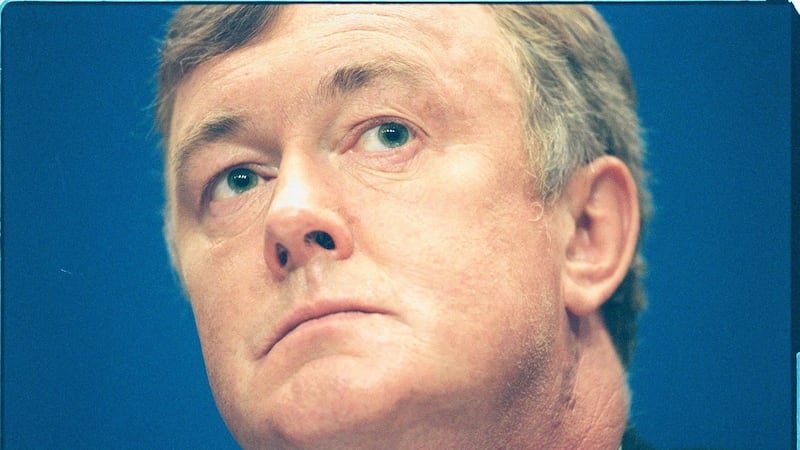Bertie Ahern feared there would be an outbreak of violence between the Provisional IRA and dissident republicans as bitterness between the sides grew in 2000.
Members of the Real IRA had been intimidating Provisional IRA members at the time and the former taoiseach raised concerns this would escalate into an internal fight between the two republican factions.
Cabinet documents from the time, released by the National Archives in London, show that dissident republicans were under heavy surveillance by the Irish authorities amid fears they would carry out a damaging attack. In 1998, 29 people, including a pregnant woman with twins, were killed when the Real IRA set off a car bomb in Omagh.
Such was the concern among the Irish government at the dissident threat in 2000 that then minister for justice John O’Donoghue favoured a “pre-emptive round-up” of about 150 key figures.
READ MORE
During a working lunch between Ahern and British prime minister Tony Blair in July 2000, the taoiseach said there was a “growing bitterness” on the ground between the dissidents and the Provisional IRA, according to a memo of the meeting.
“The dissidents were not in the same league as PIRA [Provisional IRA] but they were not cowed and there are individual cases of RIRA [Real IRA] intimidating PIRA members. The taoiseach feared that at some point [senior IRA commander Brian] Keenan’s patience would snap and things would get very messy,” said the memo.
“This is a less attractive scenario than it appeared at first sight and could have grievous consequences for maintenance of the ceasefire.
“The taoiseach said the Irish would maintain their heavy surveillance on the dissidents. They were effectively pursuing a campaign of harassment which was evidently rattling the dissidents (as the recent attack on a Garda home in Dundalk demonstrated). But the dissidents probably retained the scope to use new unknown recruits.”
Two weeks before this meeting, Ahern said O’Donoghue was becoming increasingly concerned following surveillance of leading dissident figures.
“O’Donoghue was inclined towards a pre-emptive round-up of the key figures. In the Irish view that would amount to about 150, covering a spectrum from leading figures to hangers-on (he implied that the RUC might favour a less selective approach),” said the memo of a phone conversation between Ahern and Blair.

The taoiseach said that there was no intelligence of an imminent attack but “the overall picture was troubling”.
After the phone call, the British ambassador to Ireland, Ivor Roberts, cautioned that they should “tread carefully” in any round-up of dissidents.
“There is still a strong propensity in certain quarters in Ireland to view any perceived British involvement in security matters in the most sinister light. We need to ensure therefore that the Irish should be seen to be both driving this operation and the inspiration for it,” he wrote.
“Neither should we discount the possibility of a Republican backlash in the South. Despite the bitterness of the rhetoric exchanged, Sinn Féin and PIRA will find it hard to take a publicly positive attitude to their erstwhile brothers being rounded up. Those members of the Real IRA who escape the net may take radical action, not only in Great Britain and Northern Ireland, but also in the Republic. This embassy would be a clear target.”
At the time, the British wanted the US government to designate the Real IRA as a terrorist organisation, as a result of the growing threat of the group, with lobbying to national security adviser Sandy Berger. This designation was made in 2001.











